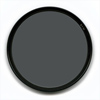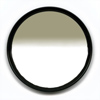Filter
A filter for your lens can be compared to a pair of sunglasses or ski goggles. Depending on what color you have on the glass, what surface treatment the glasses have, you can have different effects on how the outside world looks.
A filter is a thin glass plate that in most cases is screwed on the front of the lens.
There are several variants of filters, to achieve different results purely visually, but all filters that are screwed on the front of the lens also protects it.

Cheap Protector and an Insurance
Imagine if the front lens cap fell off your lens, which may have cost you several thousands of dollars, whilke the lens was in the bag and when you pick up the lens you see that your car- or home keys have scratched the front lens. Your lens may be forever visible scratched, loose some value and if you are really unlucky - it might even turn up signs of this in your photos.
If you are unlucky the front lens can break in case you drop the lens or you have something hitting the front lens. A lens filter is there to catch it, and to serve and protect your lens.

If you had a filter on the lens, this could have been easily replaced instead; if scratched. The scratch would have ended up on the filter and the lens' front lens would have remained undamaged. The lens filter is a simple and cheap insurance so - in other words, always make sure to have a filter on your lens.
Filter Diameter
Different lenses have different filter diameters. Depending on the size of the lens and its front lens, the size of the filters that can be different. Each product page here on the Lensora states which filter diameter works for the that lens.
When If you buy a lens, you should make sure that you buy a filter at the same time. If you have been informed that the lens has a filter diameter of 67 mm, you will of course ask for a filter of this size. Your photo retailer or online store is usually good at suggesting recommended accessories for the lens you purchase.
Different sorts of filter
Based on how your filter is intended to be used; if it is intended solely for protection or to give some special effect to the image, there are a lot of different types of filters to choose from.
UV Filter

The best selling and the most common filter on the market. If you do not want to achieve any special effect, which the filters below can do, it is a UV filter that is recommended as a UV filter basically is neutral to the outcome of the image. The reason it is called UV filter is because it removes ultraviolet radiation which should give you cleaner colors and less haze in the image.
UV filters are usually used by retailers as the suggested and generic protection for the lens.
Read more about UV filters at HOYA (external link)
Skylight Filter

A skylight filter is slightly pink to be able to give a warmer color tone. They are available in several different variants and strengths.
The fade of the filter reduces the blue tone in the image you often get when shooting outdoors, for example, under a clear blue sky.
Read more about Skylight filters at HOYA (external link)
Polarization Filter

The glass in a polarizing filter looks almost black and does not let in nearly as much light as a UV filter, whose glass is totally transparent. With circular polarization filters you can rotate the filter and conjure away reflections from water and windows and in the same way, the polarizing filter can give you more saturation in the colors. When using a polarizing filter, the sky gets a slightly fuller blue color, for example.
The polarizing filters are very common and popular among landscape and nature photographers for the reasons just mentioned.
Read more about polarizing filters at HOYA (external link)
ND or Gray Filter

An ND (Neutral Density) or gray filter is a color-neutral filter whose function is to let through less light than a regular filter. Why do you want to let in less light? Well, because in bright sunshine it can be difficult to choose the aperture and shutter speed yourself. If you really want to use a longer shutter speed, for example to capture the movement of water in a waterfall, but still want to use a smaller aperture (larger light input) and then in bright sunshine it can result in the camera getting too much light and the image becomes what is called overexposed; the image becomes too bright. These filters are then used to regulate and slow down the amount of incoming light.
The filters are called, for example, NDx2, NDx4 and NDx8 and the figure here stands for how much impact the filter has on the shutter speed.
The higher the number, the greater the effect of the filter on the amount of light passed through.
Read more about ND filters at HOYA (external link)
Tinted ND or Gray Filter

Based on the same principle as the ND filters, this filter prevents light from entering the camera. Here, however, the filter is tinted. One part of the filter prevents light from entering while the lower half here is completely neutral.
This is used for landscape photography where you want to regulate the relationship between sky and land; between the bright sky and the darker ground.
How much of the filter should be tinted can vary (eg 25 or 50%) and the degree of tinting follows the same pattern as with the standard ND filters above.
Filters with other and more special effects

There are filters in all the colors of the rainbow and there are filters that do ... almost everything. Nowadays, digital image processing may to some extent have replaced many of the desired effect of these filters, but it still means that you, together with the right filter, are only limited by your own creativity.
Read more about special filters at HOYA (external link)
Filters for long telephoto lenses

Bright telephoto lenses (such as f/ 2.8) with focal lengths of 300 and 400 mm (and above) often have such large and wide front lenses and lens elements at the front that more traditional filters are not available. The design of the lenses is therefore in such a way that you can insert filters via a holder towards the narrower part of the lens (towards the camera) (see picture to the right). The range of available filters here is much smaller.
Check with the lens manufacturer or your photo retailer for more information.